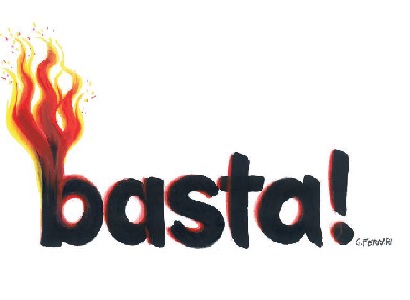Italy on fire
Publish date 11-01-2022
 Also this summer in Italy the fires damaged many places for over three months: first Sardinia with the centenary olive trees of Oristano, then Sicily with the natural oasis of Simeto, Catania, Enna, Palermo, Ragusa; Lazio in Castelporziano; the Marches in Castelfidardo and Porto Recanati. In Abruzzo the D'Annunzio pine forest, in Molise San Giacomo degli Schiavoni; in Calabria the Aspromonte national park and then again…
Also this summer in Italy the fires damaged many places for over three months: first Sardinia with the centenary olive trees of Oristano, then Sicily with the natural oasis of Simeto, Catania, Enna, Palermo, Ragusa; Lazio in Castelporziano; the Marches in Castelfidardo and Porto Recanati. In Abruzzo the D'Annunzio pine forest, in Molise San Giacomo degli Schiavoni; in Calabria the Aspromonte national park and then again…
From the beginning of the year to August 19, over 140,000 hectares of forest were burned by the flames. 2021 is the worst year for fires. The figure provided is underestimated by 20% because it does not record fires smaller than 30 hectares. The consequences include not only the destruction of the landscape, animals, biodiversity, their habitat, centenary trees, but also the destruction of fertile soil and humus which requires long regeneration times. Sometimes irreversible damage has also been caused to the water supplies of the underground aquifers because the good soil of the forest filters and absorbs the rain water, preventing it from washing away and running away violently. A problem of great depth that leads ecological associations to affirm that fires are one of the main socio-ecological emergencies of the nation.
From 1970 to 2020 there were about 430,000 fires on wooded and non-wooded areas, with an average of about 8,500 events per year and an average of 12 hectares per event. About 2.7 million hectares of wooded areas, with many fires recurring on the same surface burned in previous years. For forest fires alone, the worst years were 1993, 2007 and 2017, having each exceeded the threshold of 100,000 hectares of forest burned.
In Italy, the fires caused the emission of greenhouse gases equivalent to 6.8 million tons of CO2 into the atmosphere. The sixth assessment report, by the Intergovernmental Panel on Climate Change (IPCC), published in August, calls for the fight against forest fires to be included in environmental protection and climate change mitigation and adaptation policies for prevent forests from becoming, with the increasing risk of fires, themselves part of the problem rather than part of the solution to global warming. It is estimated that the damage caused by the destruction of one hectare amounts to 10,000 euros. On average, it takes at least 15 years to restore the starting conditions in non-special areas (with particular trees and ecosystems).
For years we have been discussing the interventions of monitoring, surveillance, prompt shutdown, repression. The preventive measures also concern education, respect for common goods, policies to revitalize the economy of rural areas and the forest that produces tangible values (wood, mushrooms, truffles, chestnuts) and tourist, recreational, cultural services, of water regime ... The practical - political debate concerns not only the rules, but their applications and the not squandered use of funds. Since it is a matter for the Regions, there is no real national coordination. The data in the fire register are not up-to-date. 44% of the municipalities have never used them. Following the fires of 2021, on 2 September the Government approved the Fire Decree which entrusts the Civil Protection Department with the task of drawing up the National Plan every three years to strengthen the necessary human, technological, air and land resources. To acquire structures they will also draw on NRP (European) funds. Meanwhile, local authorities have 100 million available to combat forest fires.
Can anything change? Ecological associations have asked politics to take necessary measures. In Italy about 1/3 of the surface (11.4 million hectares) is covered by woods, of which 32% is part of protected areas. Individuals, environmental associations, municipalities, companies, organizations are trying to increase the number of trees in and around cities. The delinquency practiced with fires can make any effort of this type seem useless, which instead is also essential to say "enough!" to most of the absurd practices we have described.
Carlo Degiacomi
NP October 2021







